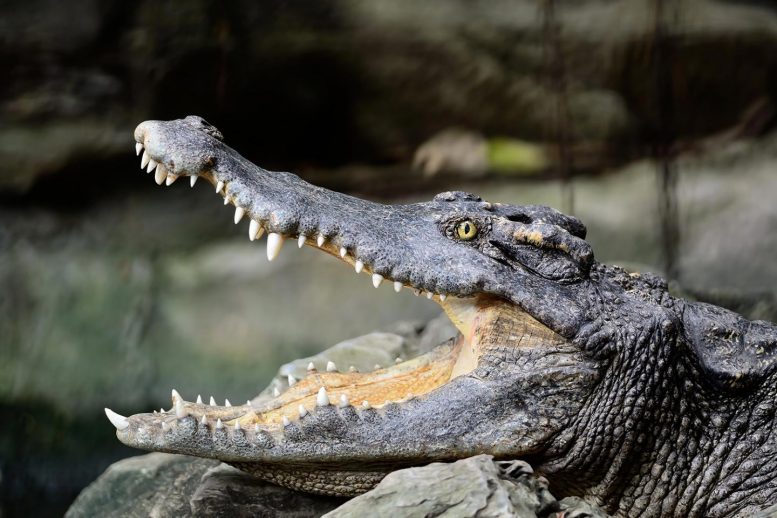
Siamese Crocodile (Crocodylus siamensis) Credit: Envato
While most people imagine alligators and crocodiles as being much the same now as they were during the age of dinosaurs, digging into the fossil record shows much more diverse species through time. Semiaquatic ambush predators resembling modern alligators and crocodiles are seen in fossil relatives going back to the Jurassic period, but the group also includes oceangoing crocs with flippers and tail flukes, heavily armored pug-faced crocs, long-legged crocs that ran on land, and giant crocs with tiny teeth and surfboard-shaped skulls.
Many of these odd adaptations seem to be associated with what the animals were eating, but how do scientists study the diet of animals that have been dead for millions of years?
Two researchers—one from the University of Tennessee, Knoxville, and one from Stony Brook University—have tried to tackle this question by bringing together mathematical analyses of the animals’ shapes, surveys of modern crocodiles’ diet, modeling methods for reconstructing the diet of fossil groups, and forensic-style interpretations of damaged bones from the distant past.
“We used to put modern crocs into two ecological bins: slender-snouted groups who eat only fish and broader-snouted groups who eat pretty much whatever they want,” said paleontologist Stephanie Drumheller, an adjunct assistant professor in UT’s Department of Earth and Planetary Sciences and coauthor of the paper, published in Zoological Journal of the Linnean Society. “The reality is a lot more complicated.”
Slender-snouted crocodiles, such as Indian gharials and freshwater crocodiles, actually eat all sorts of animals other than fish, though they do tend to stick with smaller prey relative to their body size. Among the crocs that eat larger prey, the researchers found an unexpected split. Broad V-shaped snouts, like those found in American crocodiles, correspond with animals that are able to eat prey species up to their own size. More U-shaped snouts, like those seen in American alligators, can often be found in species that take down even larger prey—sometimes close to twice their own body weight.
“Several of these fossil groups had skulls and teeth wildly different from living species. This suggests that the way they fed also differed dramatically,” said coauthor Eric Wilberg, an assistant professor in Stony Brook University’s Department of Anatomical Sciences. Among these are a group of extinct crocs that lived in the oceans. While they had slender snouts similar to those of living gharials, their eyes were positioned more on the side of the head, and the part of the skull that houses the jaw muscles was enlarged. This suggests they were not ambush predators like modern crocodylians.
Another group consists almost exclusively of species that lived on land. These crocs had flattened, serrated teeth, like those of carnivorous dinosaurs, and eyes positioned more on the side of the head.
Paleontologists can’t observe feeding in extinct groups, but the fossil records sometimes provide snapshots of this behavior.
“Crocodiles and their relatives are pretty messy eaters,” said Drumheller. “That’s great for us, because they’ll often leave broken, bitten bones behind for paleontologists to find.”
Most of these fossil bite marks line up nicely with the idea of crocodiles and their relatives eating within their expected weight classes. The fossils that don’t fit may be evidence of scavenging, a behavior that is rarely testable in the fossil record.
Some crocodile groups remain mysterious. No fossil bite marks exist for the stubby-faced crocs, whose complex teeth and weak jaws suggest they might have been plant eaters, or for the surfboard-headed ones, which had tiny teeth and may have sported pelican-like pouches under their long, wide jaws.
“Crocodiles and their relatives have long been thought of as unchanged for hundreds of millions of years, and as a result they have received less scientific attention than other groups like dinosaurs and mammals,” said Wilberg. Renewed interest in the group has consistently demonstrated a complex evolutionary and ecological history, going far beyond the semiaquatic ambush predators alive today.
Reference: “A synthetic approach for assessing the interplay of form and function in the crocodyliform snout” by Stephanie K Drumheller and Eric W Wilberg, 30 September 2019, Zoological Journal of the Linnean Society.
DOI: 10.1093/zoolinnean/zlz081

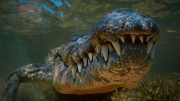


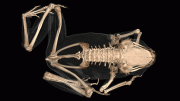
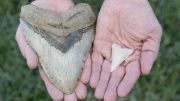

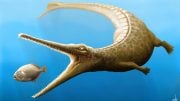
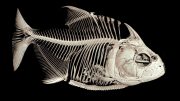
Interesting those stuck in the year 2019 and it is 2021, after 2020, the articles of Crocodiles and St. Augistine and those would only be of those born in August. A name of John and Woman that holds the name of John and he that did not provide and the mix up a name of Raymond a viable on e a Pastor and mix up of a Revern. Some I know who spell so many of the words with the ending of a d and the circumstance where the name of Joseph and the insurance, where the Woman of may holds and held. The burning of a building where a small child is sighted and the miss direction a mothers name not Mary Anne and Julia not marry William as her placing is and has always been as an apprentice in Aboriculture. A capture of a capture of none if the person Vialble do not know the History of North America and a Canadian Holding. The Just of the Dictatorship of Italian to Old English. Not the Prussian as everything tends to burn when Prussia is involved, other wise there is the Curse of Nero and Robert.
A mistake was made by a man with the greatest family ever he hired a lawyer where the name of John and a William Shakespear Citation held him as a victim.
Raymond John Joseph Ciupak.
From the Greatness he was a Jackson Mac Kensie, then he fell to Russle and Brant.
I am in Provincial Civil Law, where business begins. Red Deer County Alberta, Manitoba Justice. Not in Jail just not stupid.
Have they Knocked down the 400 Edmonton Knox building in Winnipeg Manitoba, they lost there Roman Fort in 2010 I never married.